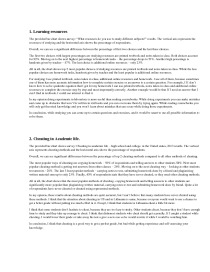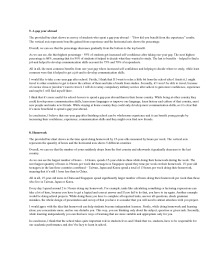English Speaking Works (diagrams)



Cheating in Academic life. University studies abroad. A gap year abroad.
The provided bar chart shows survey: “What resources do you use to study different subjects?” results. The vertical axis represents the resources of studying and the horizontal axis shows the percentage of respondents.
The first two choices with largest percentages are studying resources are printed textbook and notes taken in class. Both choices account for 92%. Moving on to the next highest percentage is homework tasks – the percentage drops to 51%. Another high percentage is handouts given by teacher – 47%. The last choice is additional online resources – only 23%.
All in all, the chart shows top 2 most popular choices of studying resources are printed textbook and notes taken in class. While the less popular choices are homework tasks, handouts given by teacher and the least popular is additional online resources.
For studying I use printed textbook, notes taken in class, additional online resources and homework. I use all of them, because sometimes one of them has more accurate information how to complete certain exercise or an answer to a certain question. For example, If I don’t know how to solve quadratic equation that I got for my homework I can use printed textbook, notes taken in class and additional online resources to complete the exercise step by step and most importantly correctly. Another example would be that If I need an answer that I can’t find in textbook, I could use internet to find it.
In my opinion doing experiments in laboratory is more useful than reading coursebooks. While doing experiments you can make mistakes and come up to obstacles that won’t be written in textbooks and you can overcome them by trying again. While reading coursebooks you will only get theorical knowledge and you won’t learn about mistakes that can occur while doing those experiments.
In conclusion, while studying you can come up to certain questions and exercises, and it would be smart to use all possible information to solve them.
Overall, we can see significant differences between the percentage of top 2 cheating methods compared to all other methods of cheating.
The most popular ways of cheating are copying homework – 56% of respondents and telling answers to other students 58%. Next most popular cheating method is getting test answers from other classes – 26%. Moving on to the next cheating way – looking at other students test answers - 20%. The last 3 least popular methods – carrying notes to test, submitting homework done by a friend and plagiarizing written material sum up to only 23%. Finally, 40% of respondents state that they have never cheated, or they used other cheating methods.
- Languages Home works
- Microsoft Word 21 KB
- 2021 m.
- English
- 5 pages (3505 words)
- School
- Arnoldas

















